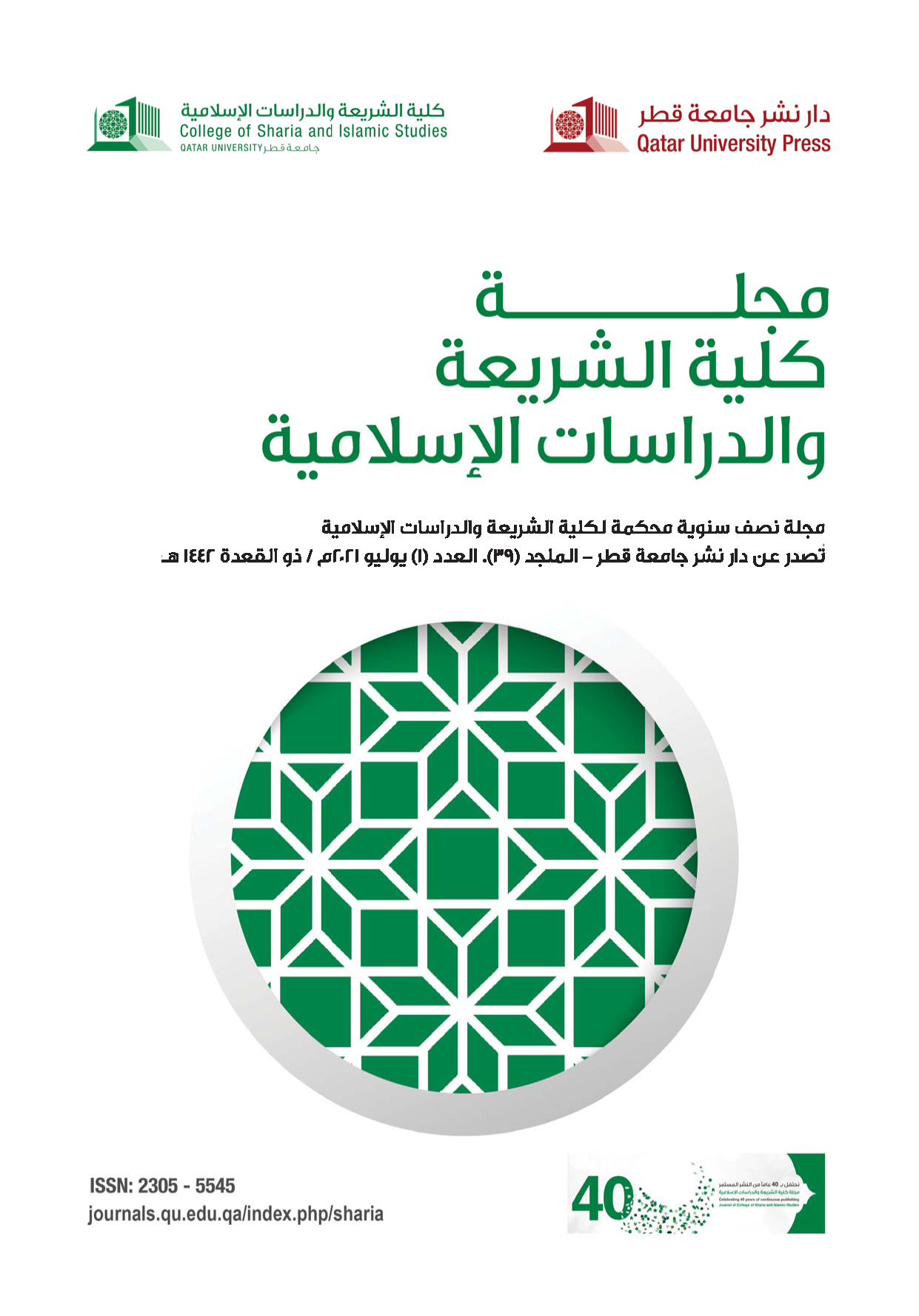دور النبوءات في إرهاب داعش
الملخص
الأهداف: تهدف هذه الدراسة إلى الكشف عن كيفية استغلال داعش للنبوءات الواردة في القرآن والأحاديث؛ للعثور على مجندين جدد ولإضفاء الشرعية على أيديولوجيتها. تحاول الدراسة التعرف على كيفية إساءة تفسير القضايا الحساسة للإسلام لتضليل وترهيب الشباب المسلم. كما أنها تسعى إلى إيضاح صلة الاستخدام الخاطئ للآيات والأحاديث النبوية البريئة بواسطة الأصوليين بالإرهاب.
المنهجية: تمت مراجعة جميع أعداد مجلتين لداعش، وهما دابق ورومية، وتم اختيار المقالات المتعلقة بها وفحصها ومقارنتها مع الأخرويات السنية التقليدية. بالإضافة إلى تحليل محتويات المجلات المعنونة بأسماء النبوءات، كما تم فحص الأدبيات السابقة لهذه الدراسة.
النتائج: استخدمت داعش الأخرويات لإقناع الشباب المسلم بالهجرة إلى ما يسمى بأراضيه والقتال من أجل قضيته السامية. حاولت الجماعة الإرهابية تحقيق هذا الهدف بشكل رئيسي من خلال إعادة تفسير الوعود النبوية للإسلام في وسائل الإعلام. يُظهر التحليل أن داعش لم تخدم الدين بل خدم أيديولوجيته المتطرفة. ومع ذلك، فقد أظهر الوقت أن القضية الوحشية لداعش كانت بعيدة كل البعد عن الدين الإسلامي حيث لم تتحقق أي من نبوءات داعش المروعة.
أصالة البحث: على الرغم من وجود العديد من الدراسات حول داعش، إلا أن القليل منها، أو أيًا منها، لم يحلل كيف ضلل داعش الأشخاص بالنبوءات، التي يجب أخذها في الاعتبار أثناء دراسة النزاعات في الشرق الأوسط؛ حيث تم تأسيس كيانات (مثل إسرائيل)، أو أنظمة (مثل إيران) على أساس نبوءات الرؤيا. داعش كانت تجربة أخرى باءت بالفشل. إن عدم ذكر جوهر أيديولوجية داعش النابعة من النبوءات الإسلامية المحرف تأويلها من شأنه أن يترك مناطق رمادية في الدراسات العلمية. وهذه الدراسة ستزيل ذلك اللبس.
المقاييس
##plugins.themes.bootstrap3.article.details##
النبوءاتالإرهابالدينداعشالسياسة
Al-Nisaburi, Muslim, Sahih Muslim, (English Version), New York: 2007.
Al-Tirmidhi, Muhammad b. Isa, Jami At-Tirmidhi, (English Version). New York: 2007.
Bosworth, C.E., Encyclopedia of Islam. Leiden: Brill, 1997.
Bozorgmehri, M. Roots of Violence by ISIS, An Analysis on Beliefs. International Journal of Social Science Studies 6, 3(2018): 1-8.
Celso, A. N. Dabiq: IS’s Apocalyptic 21st Century Jihadist Manifesto. Journal of Political Sciences & Public Affairs 2, 4(2014): 1-4.
Cide, O. Ortadoğu’da Göçü Tetikleyen Savaşların Nedeni Olarak Din. Ilahiyat Akademi Dergisi 3, 4(2016): 149-158.
Cook, D. Messianism in the Shiite Crescent. Current Trends in Islamist Ideology 11: 91-103.
Dabiq. Monthly Magazine. ISIS, 2014-2017.
El-Badawy, E. Inside the Jihadi Mind Understanding Ideology and Propaganda. London: Tony Blair Institute for Global Change, 2015.
El-Khatib, A. "The Journal of Quranic Studies Published by SOAS London University The Question of Objectivity and Prejudice", Journal of College of Sharia and Islamic Studies, Vol.38 (1), 2020, pp.91-120.
Esposito, J.L. Islam and Political Violence. Religions 6(2015): 1067-1081.
Fauzi, A and Hamid, A. ISIS in Southeast Asia: Internalized Wahhabism is a Major Factor. Singapore: Iseas Yusof Ishak Institute, 2016.
Ferguson, N. Think Again: Power, 2009. Available at: https://foreignpolicy.com/2009/11/03/think-again-power/ (accessed 22 March 2019).
Gregg, H.S. Three Theories of Religious Activism and Violence: Social Movements, Fundamentalists, and Apocalyptic Warriors. Terrorism and Political Violence 28, 2(2014): 338–360. doi:10.1080/09546553.2014.918879.
Haija, M R. The Armageddon Lobby: Dispensationalist Christian Zionism and The Shaping of Us Policy Towards Israel-Palestine. Holy Land Studies 5, 1(2006): 75-95.
Hewitt, S. R. The Jewish Messiah and the End of Days, 2013. Available at: https://www.huffpost.com/entry/jewish-messiah-and-the-end-of-days_b_2332919?guccounter=1 (accessed 7 July 2019).
Ibn Majah, Muhammad b. Yazid, Sunan Ibn Majah, (English Version). New York: 2007.
Ingram, H. J. An analysis of Islamic State’s Dabiq magazine. Australian Journal of Political Science 51, 3(2016): 458-477.
Jacoby, T. Islam and the Islamic State’s Magazine, Dabiq. Politics and Religion, (2018): 1–23. doi:10.1017/s1755048318000561
Juergensmeyer, M. Sacrifice and cosmic war. Terrorism and Political Violence, 3, 3(1991): 101–117. doi:10.1080/09546559108427118.
Kazarian, N. What is the Future of Religion in International Affairs? Washington: IRIS, 2015.
Koç, E., Ortadoğu Siyasetinde İran ve Suudi Arabistan İlişkileri. Bursa: Dora Yayınları, 2020.
———, "İran-Lübnan İlişkilerinin Kimliksel Bağlamda Analizi", In Biz ve Ötekiler: Uluslararası İlişkilerde Kimlik Perspektifinden Dış Politika, G. Çapar (Ed.), pp. 165-184. Ankara: Siyasal Kitabevi.
Khorasani, V., His Holiness Leh Explicitly Warns Those Who Have Distorted His Words (See Persian version in website), February 22, 2016. Available at: http://bit.do/fP7Xp (accessed March 29, 2021).
Malachy, Y. American fundamentalism and Israel: The relation of fundamentalist Churches to Zionism and the State of Israel. Jerusalem: The Institute of Contemporary Jewry, The Hebrew University of Jerusalem, 1978.
McCants, W. How ISIS Got Its Flag, 2015. Available at: https://www.theatlantic.com/international/archive/2015/09/isis-flag-apocalypse/406498/ (accessed February 21, 2020).
Melvin, N. Islam, Conflict and Terrorism, 2005. Available at: https://www.sipri.org/sites/default/files/YB06%20123%2002C.pdf (accessed February 15, 2020).
Moghadam, A. The Shi’i Perception of Jihad, 2003. Available at: http://insct.syr.edu/wp-content/uploads/2013/03/Moghadam-Assaf.Shia-Perception-of-Jihad.pdf (accessed 20 June 2019).
Mousavi, S. The Twelfth One: Imam Mahdi (PBUH) in the Bible, Quran, Islam and Other Religions ad The Promised Savior (and His Enemies and Friends), 2017. Available at: https://en.calameo.com/read/00544387085a660b5b776 (accessed 23 June 2019).
O’Shea, J. ISIS: The Role of Ideology and Eschatology in the Islamic State. The Pardee Periodical Journal of Global Affairs 1, 2(2016): 51-65.
Petrikova, I. Religion and Foreign-Policy Views: Are Religious People More Altruistic and/Or More Militant? International Political Science Review (2018): 1–23. DOI: https://doi.org/10.1177/0192512118756242.
Robins-Early, N. Inside The Islamic State’s Apocalyptic Belief, 2015. Available at: https://www.huffpost.com/entry/islamic-state-apocalyptic-beliefs_n_56044f37e4b08820d91c21a3 (accessed January 30, 2020).
Rumiyah. Monthly Magazine. ISIS, 2016-2017.
Salleh, M. A. and Zakariya, H. The American Evangelical Christians and the U.S. Middle East policy: A case study of the Christians United for Israel (CUFI). Intellectual Discourse 20, 2(2012): 139-163.
Sandal, N. A. and James, P. Religion and International Relations Theory: Towards a Mutual Understanding. European Journal of International Relations 17, 3(2011): 3-25.
Sorularla Islamiyet. Hz. İsa, kıyamet kopmadan önce tekrar yeryüzüne inecek mi?, 2007. Available at: https://sorularlaislamiyet.com/hz-isa-kiyamet-kopmadan-once-tekrar-yeryuzune inecek-mi (accessed 28 August 2019).
Stockton, R. R. Christian Zionism: Prophecy and Public Opinion. Middle East Journal 41, 2(1987): 234-253.
Tampio, N. Promoting Critical Islam: Controversy, Civil Society, Revolution. Politics and Religion 6, 4(2013): 823–843.
Uslu, N. Türkiye’nin Yeni Ortadoğu Yaklaşımı. Bilig 52, Kış (2010): 99-132.
Warner C. and Walker S. Thinking about the Role of Religion in Foreign Policy: A Framework for Analysis. Foreign Policy Analysis 7(2011): 113–135.
Wood, G. What ISIS Really Wants, 2015. Available at: https://www.theatlantic.com/magazine/archive/2015/03/what-isis-really--wants/384980/ (accessed January 31, 2020).
Xu, Y. Religion and International Relations in the Age of Globalization. Journal of Middle Eastern and Islamic Studies (in Asia) 6, 4(2012): 19-50.


